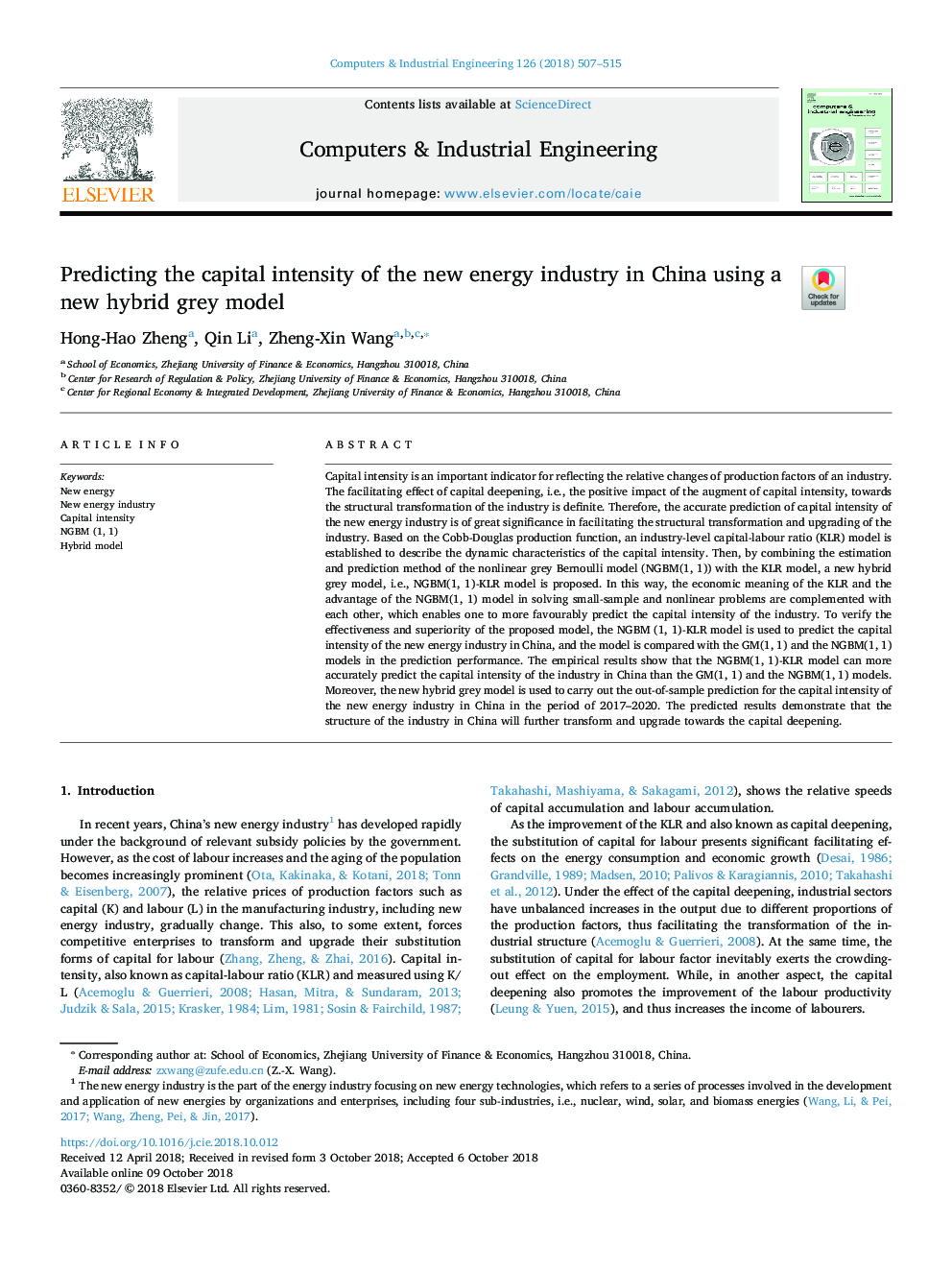| Article ID | Journal | Published Year | Pages | File Type |
|---|---|---|---|---|
| 11027484 | Computers & Industrial Engineering | 2018 | 9 Pages |
Abstract
Capital intensity is an important indicator for reflecting the relative changes of production factors of an industry. The facilitating effect of capital deepening, i.e., the positive impact of the augment of capital intensity, towards the structural transformation of the industry is definite. Therefore, the accurate prediction of capital intensity of the new energy industry is of great significance in facilitating the structural transformation and upgrading of the industry. Based on the Cobb-Douglas production function, an industry-level capital-labour ratio (KLR) model is established to describe the dynamic characteristics of the capital intensity. Then, by combining the estimation and prediction method of the nonlinear grey Bernoulli model (NGBM(1, 1)) with the KLR model, a new hybrid grey model, i.e., NGBM(1, 1)-KLR model is proposed. In this way, the economic meaning of the KLR and the advantage of the NGBM(1, 1) model in solving small-sample and nonlinear problems are complemented with each other, which enables one to more favourably predict the capital intensity of the industry. To verify the effectiveness and superiority of the proposed model, the NGBM (1, 1)-KLR model is used to predict the capital intensity of the new energy industry in China, and the model is compared with the GM(1, 1) and the NGBM(1, 1) models in the prediction performance. The empirical results show that the NGBM(1, 1)-KLR model can more accurately predict the capital intensity of the industry in China than the GM(1, 1) and the NGBM(1, 1) models. Moreover, the new hybrid grey model is used to carry out the out-of-sample prediction for the capital intensity of the new energy industry in China in the period of 2017-2020. The predicted results demonstrate that the structure of the industry in China will further transform and upgrade towards the capital deepening.
Related Topics
Physical Sciences and Engineering
Engineering
Industrial and Manufacturing Engineering
Authors
Hong-Hao Zheng, Qin Li, Zheng-Xin Wang,
